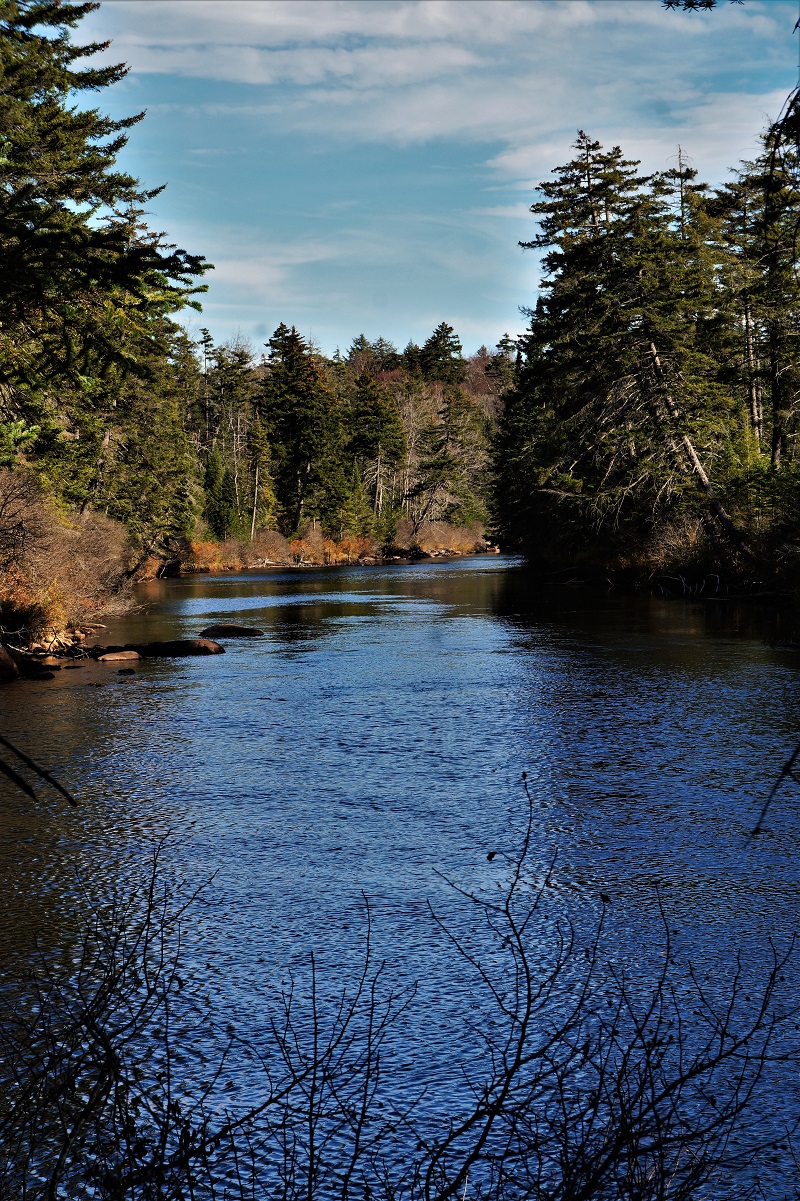The Moore trail to Inlet
Google Maps link- https://www.google.com/maps/@44.1337594,-74.9251329,558m/data=!3m1!1e3
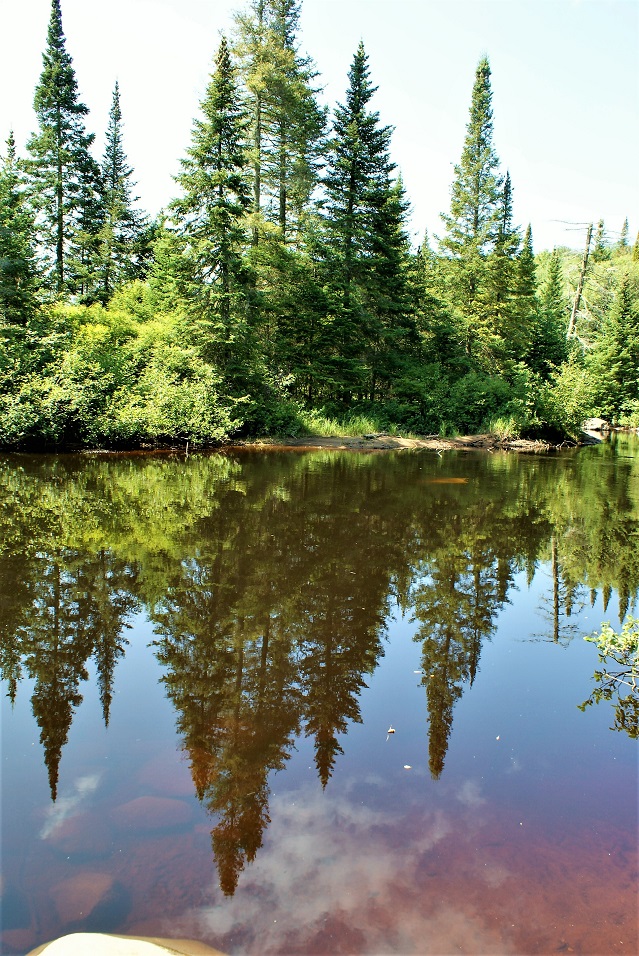
The Moore’s trail isn’t a long hike, but it’s still a very enjoyable ramble along the Oswegatchie river. It gets some use as a portage due to several shallow & rocky spots that make several sections of the river un-runnable. It’s roughly 2 miles from Wanakena to Inlet. The trail today is pretty much for recreational use, but at one time it was the main thoroughfare to Wanakena for supplies, and access to civilization.
History
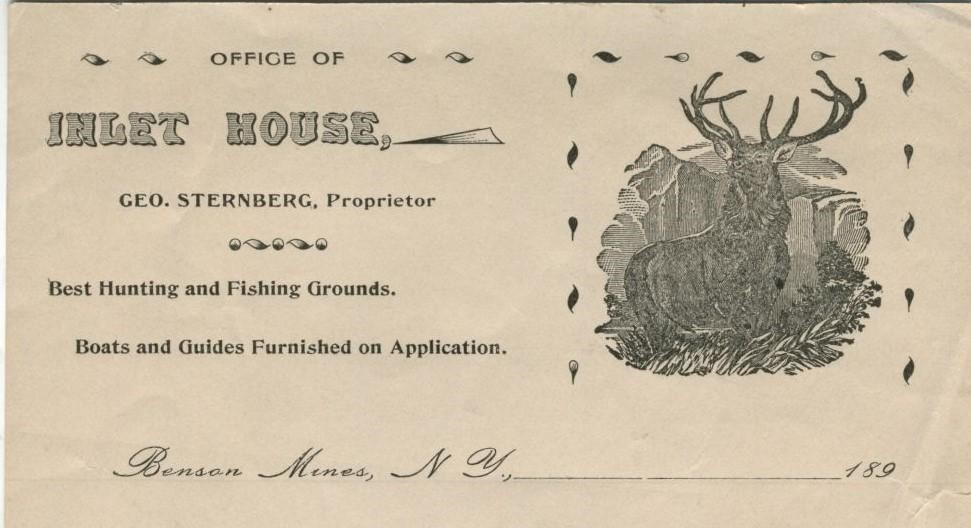
There is a ton of history concerning Wanakena, and I’m not going to even try to cover all of it here. For a more in depth look at the hamlet, see my article devoted to all things Wanakena here- https://hikingthetrailtoyesterday.wordpress.com/2017/02/22/wanakena/ . Inlet is going to be the focus here in this piece. This is the former sight of the Inlet house hotel (also known as Sternberg’s). George Sternberg started construction on the Inlet house in 1884. This was the location of the Albany road which was constructed during the war of 1812 for troops to move troops and supplies between Albany and the St. Lawrence river. It eventually led through Russell where the state had established a three -story armory. The Albany road (or sometimes known as the old military road) was the first road in the town of Fine, which was known as Scriba at that time. Today there is still a footbridge there, going to a private camp known as Knollwood.
For more on Knollwood– https://hikingthetrailtoyesterday.wordpress.com/2017/06/20/knollwood-on-the-oswegatchie/

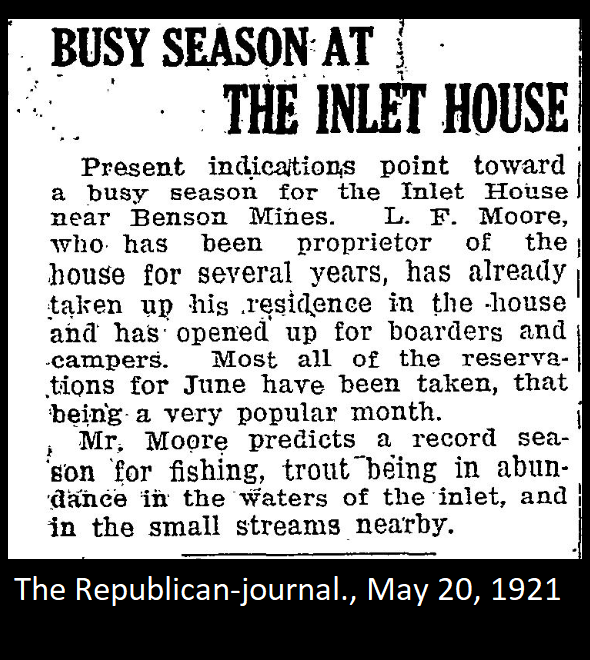
The Hotel was the starting point for many of the local hunting & fishing guides and their clients (or sports as they were often referred to). There were two hotels here, the second one replacing the original that burned.

Somewhere around the time of the rebuilding, a Frank Redway came to own the hotel. in 1905, the hotel was purchased by local guide, Frederick Phelps. There was talk that author Irving Bacheller (EbanHolden) was going to purchase the hotel, but despite a $50 deposit, Phelps was the new owner. The hotel was later purchased by Loren and Mary Moore around 1918. The next owner was John Sevey, (purchased in January of 1941) who operated the establishment until that structure burned on October 8th, 1949. The Sevey family built a house at the sight after the fire, and Mr. Sevey then went to work for the J&L steel company at Benson Mines. The final pre-state owners of the property were a Mr. & Mrs. Riley Tatman Smith of Chicago Ill. They purchased the home in early 1957. In the 1960’s the state purchased the property, all buildings were removed, and the state hand launch was established.
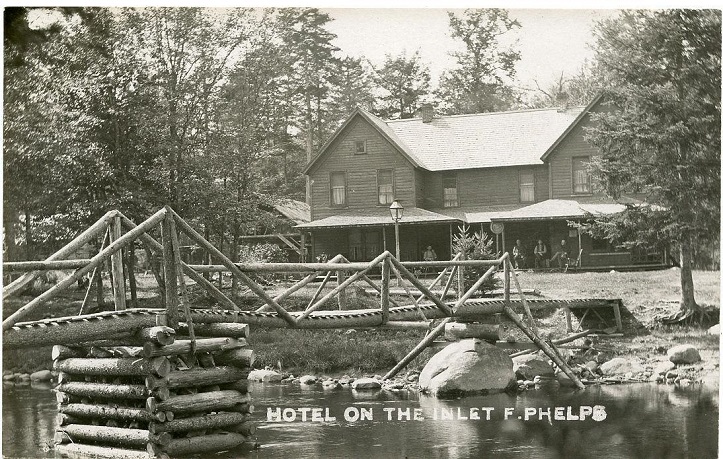
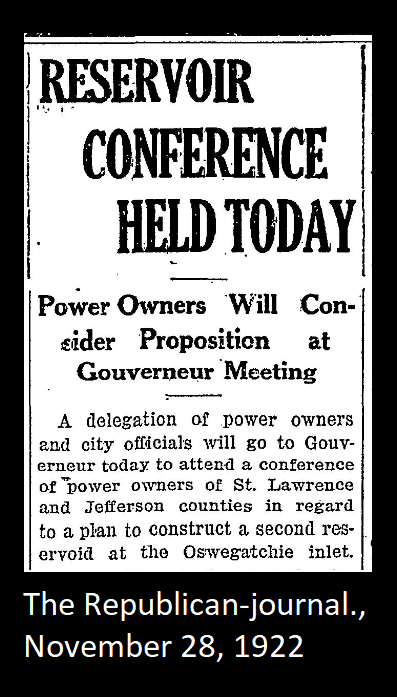
In November of 1922, there were meetings held regarding the idea of damming the river at Inlet for a hydro-electric development. Fortunately, the idea never came to fruition. There were many camps along the river and the forests before the state purchased the property. These camps catered to the hunters and fisherman that came to the area in pursuit of game. Some of the camps were camp Betsy, Carter’s camp on the plains, Amber camp, Moore’s camp and the Dobson camp at High falls. For a very good read about this time and place, I suggest you look into Herbert F. Keith’s Man of the Woods. When the state purchased the property, all these camps were removed or destroyed, as the land us regulations prohibited them.
Not only was the Inlet house for sportsman, but also for those seeking the fresh, cool mountain air as a cure for consumption (today known as tuberculosis) and other respiratory ailments. People would arrive here by stagecoach or on foot. The stagecoach came from Star Lake on what was then called the Walker road. The trail we today call the Moore’s trail was once referred to as the Rapids trail.

The son of George Sternberg, George Jr., ran the Grove Hotel in nearby Star Lake. Local lore has it that the hotel sat astraddle of the townships of both Fine and Clifton. According to the tale, the towns had different drinking laws- one was dry, and that necessitated the owners to move the bar to the other side of the hotel to be legal (the “wet” side). Apparently, this happened several times. I can’t attest to the accuracy of this, but I have heard and enjoyed it enough to share it with you.
Getting there
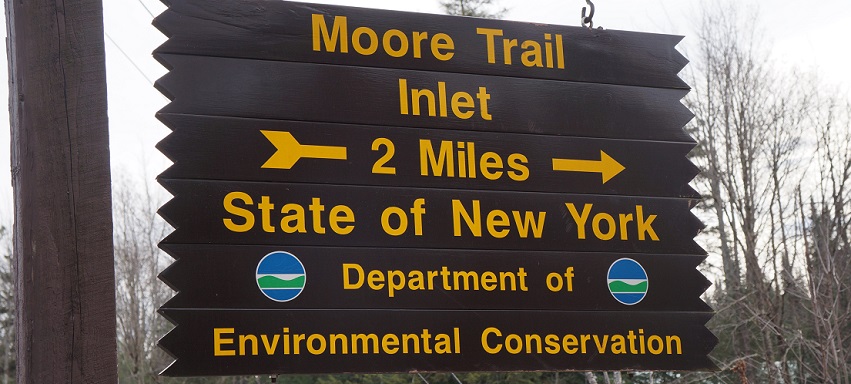 From New York State Rt. 3, turn onto St. Lawrence county RT. 61. Follow this, continuing straight onto Wanakena’s Main street. This will take you to a bridge, (which at one time was a train trestle). The parking area is directly before the bridge, on your right.
From New York State Rt. 3, turn onto St. Lawrence county RT. 61. Follow this, continuing straight onto Wanakena’s Main street. This will take you to a bridge, (which at one time was a train trestle). The parking area is directly before the bridge, on your right.

Should you decide to try it from Inlet, from New York State Rt. 3 take the Sunny Lake road, and then immediately onto the Inlet road. This is marked with a D.E.C. Five ponds wilderness area Oswegatchie river access sign. Follow this road to the end (about 3.5 miles) and there you will find the parking area and launch site. This is where the Hotels once stood.

On the trail
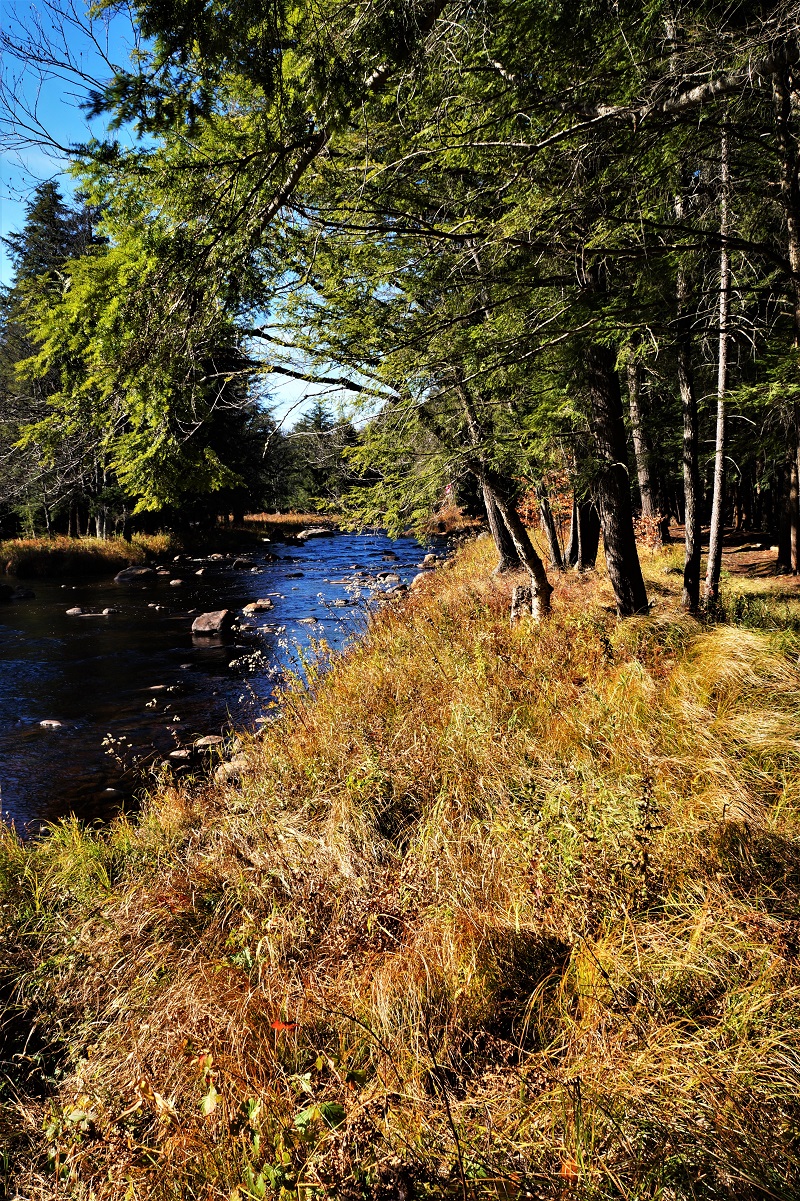
From the parking area, the trail goes over the bank to the river’s edge, and continues in a Southwesterly direction. The Oswegatchie is quite shallow here, and very rocky. Several small islands split the river through this stretch. The forest is young here, comprised of yellow birch and beech trees, and a few hemlocks. As you work upstream the trees get larger and white pine, spruce and cedar are predominate.
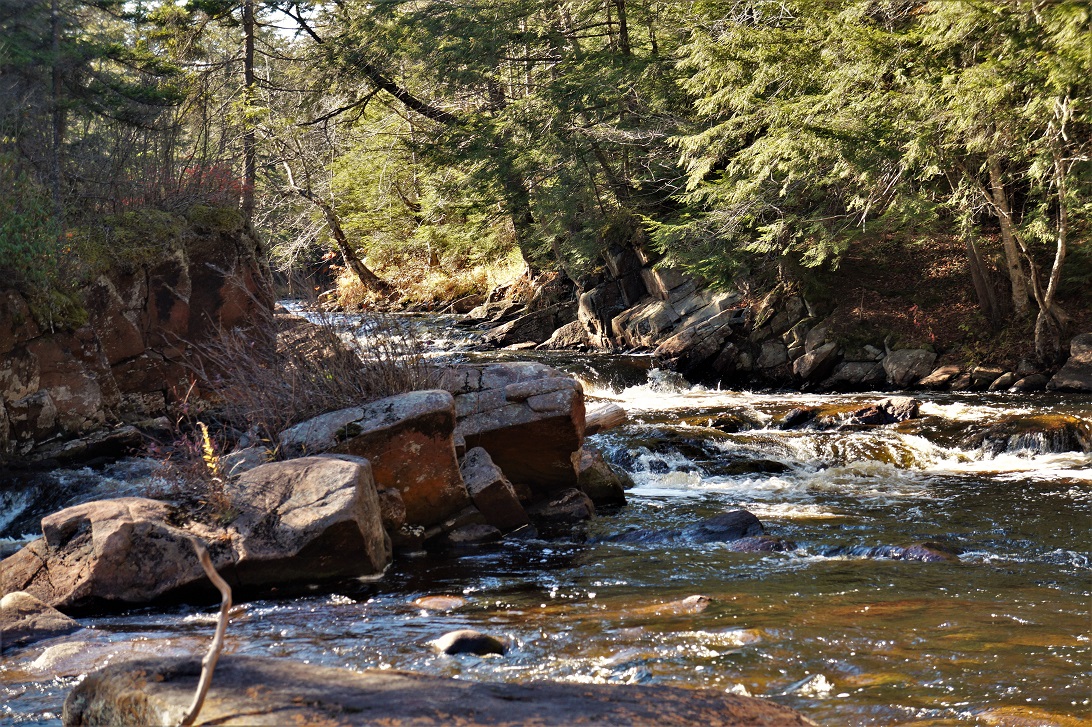 At around the 1.1 mile mark Little Falls comes into sight. This small falls drops about 8 or 10 feet over the length of the falls, and is split by a rock island. The trail continues uphill and offers some nice elevated views of the river. The few wet spots in this stretch have seen the addition of some simple, yet effective board-walks placed strategically. In another half mile, you will find another small falls/rapids as the river takes a turn .Close by, you will find some of the largest white cedar that I have seen in a long time. One is at least thirty inches thick.
At around the 1.1 mile mark Little Falls comes into sight. This small falls drops about 8 or 10 feet over the length of the falls, and is split by a rock island. The trail continues uphill and offers some nice elevated views of the river. The few wet spots in this stretch have seen the addition of some simple, yet effective board-walks placed strategically. In another half mile, you will find another small falls/rapids as the river takes a turn .Close by, you will find some of the largest white cedar that I have seen in a long time. One is at least thirty inches thick.
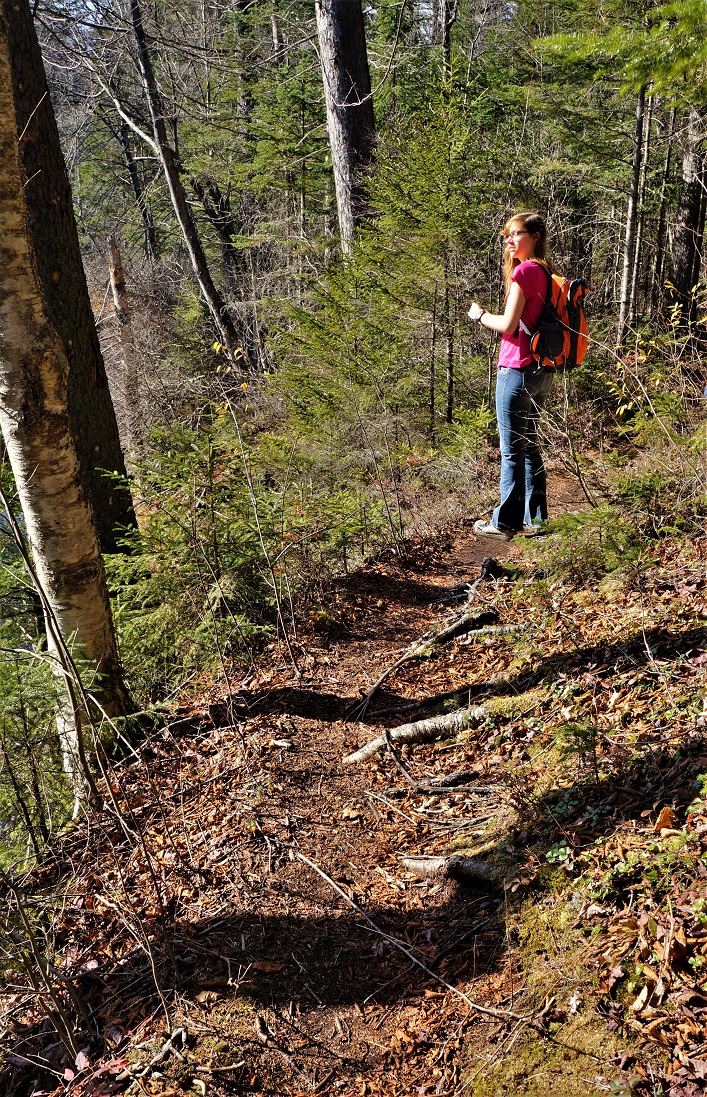
The trail here is often very close to the bank- so be careful of your footing to avoid an unplanned dip in the river. In places the trail is worn down close to a foot in depth. I wonder how much of that is from hikers in late years, or from those folks traveling to Wanakena for supplies. The last 10th of a mile tends to be fairly wet and muddy. It’s nothing terrible, but you’ll want to stay on the high spots. There is a stretch of private property just before you reach the Inlet road (2 miles from the start).
 There is a private camp on your right, and the footbridge to Knollwood is on your left. Again, these are privately owned, so please respect that. A few hundred yards down the road to your left, brings you to the inlet canoe launch, with an informative kiosk & registry. There is also an outhouse to the right.
There is a private camp on your right, and the footbridge to Knollwood is on your left. Again, these are privately owned, so please respect that. A few hundred yards down the road to your left, brings you to the inlet canoe launch, with an informative kiosk & registry. There is also an outhouse to the right.
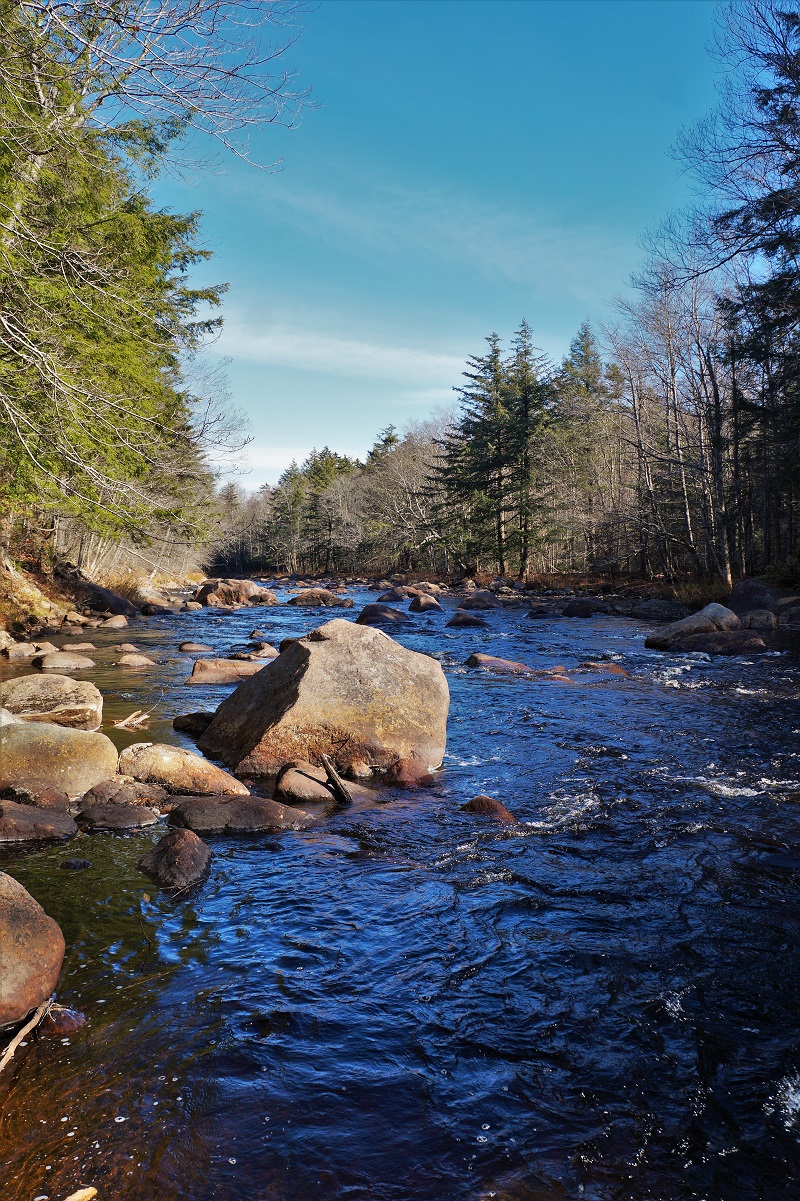 If you choose to not backtrack, follow the inlet road back to the north. You will find a sign marking a snowmobile trail back to Wanakena. I have never hiked this, so I can’t offer anything other than the trailhead. This comes out on country route 61, less than a half mile north of the Moore’s trailhead parking area.
If you choose to not backtrack, follow the inlet road back to the north. You will find a sign marking a snowmobile trail back to Wanakena. I have never hiked this, so I can’t offer anything other than the trailhead. This comes out on country route 61, less than a half mile north of the Moore’s trailhead parking area.
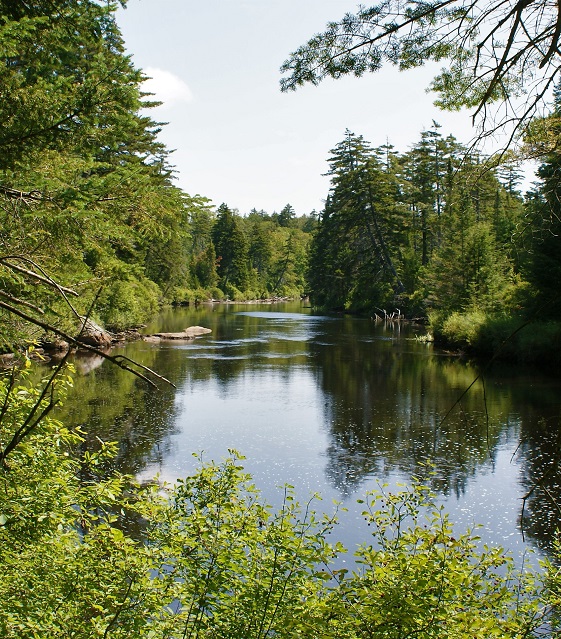 Whether you hike this trail, or just read about it, I hope it gives you a glimpse of the past and our local history. You probably know someone that remembers the hotels, or that has launched an adventure from Inlet. If you enjoyed this, please feel free to share so that others might enjoy it as well.
Whether you hike this trail, or just read about it, I hope it gives you a glimpse of the past and our local history. You probably know someone that remembers the hotels, or that has launched an adventure from Inlet. If you enjoyed this, please feel free to share so that others might enjoy it as well.
A special thanks to
Mark Friden (Clifton town Historian) and
Shirley Meek (fine town historian)
They were able to offer some very vital parts of this story.

References and sources
New York State D.E.C.- http://www.dec.ny.gov/lands/34715.html
New York state Historic newspapers– http://nyshistoricnewspapers.org/
The Gouverneur Tribune press– 4/25/1957
“Man of the woods” by Herbert F. Keith
“Discover the Northwest Adirondacks” By Barbara McMartin
“Adirondack Guides from the town of Fine” by Jean Grimm
“Hotels & Churches in the Town of Fine” by Jean Grimm
“Adirondack Lakes” by Thomas A. Gates
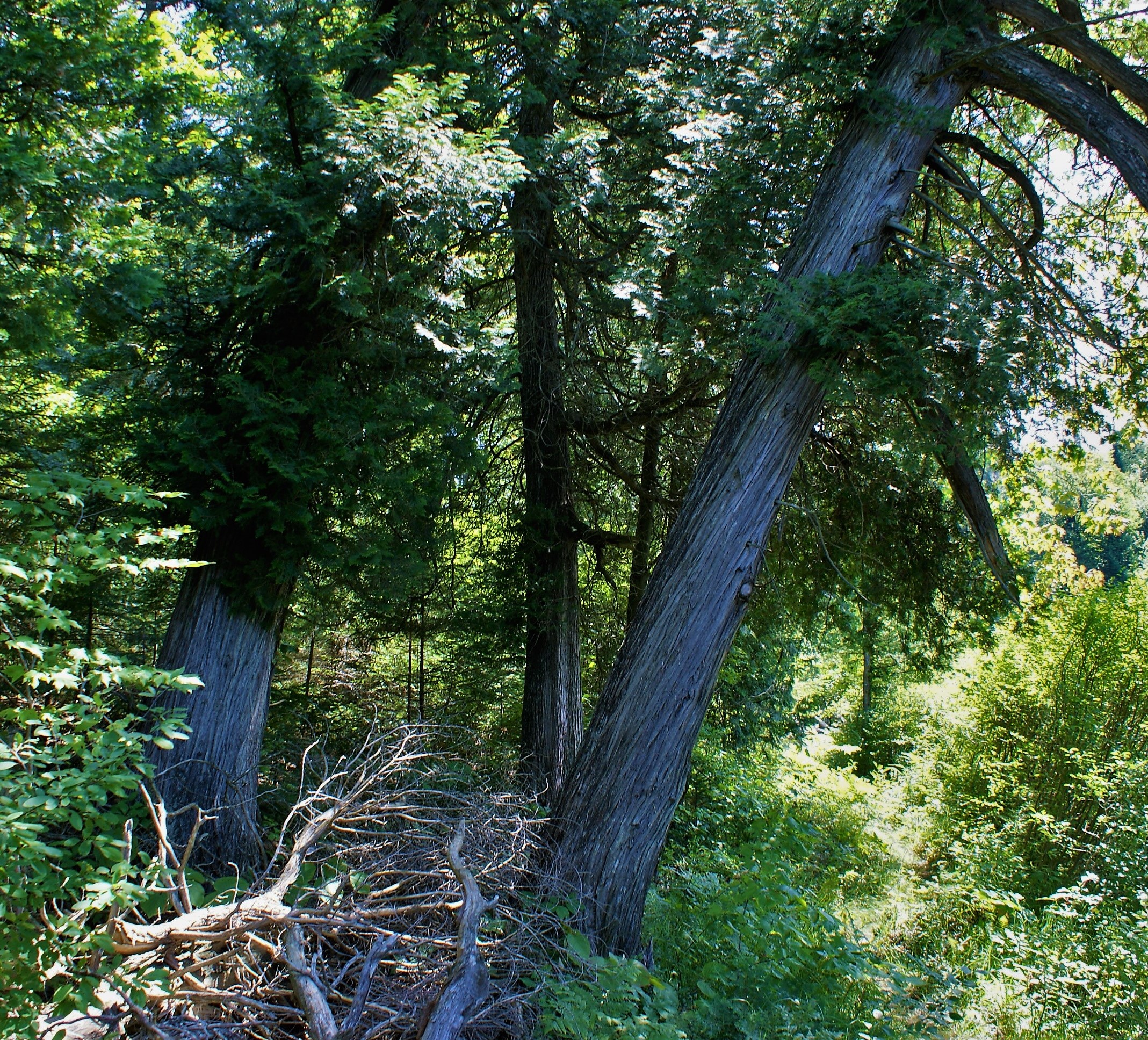
About the Author
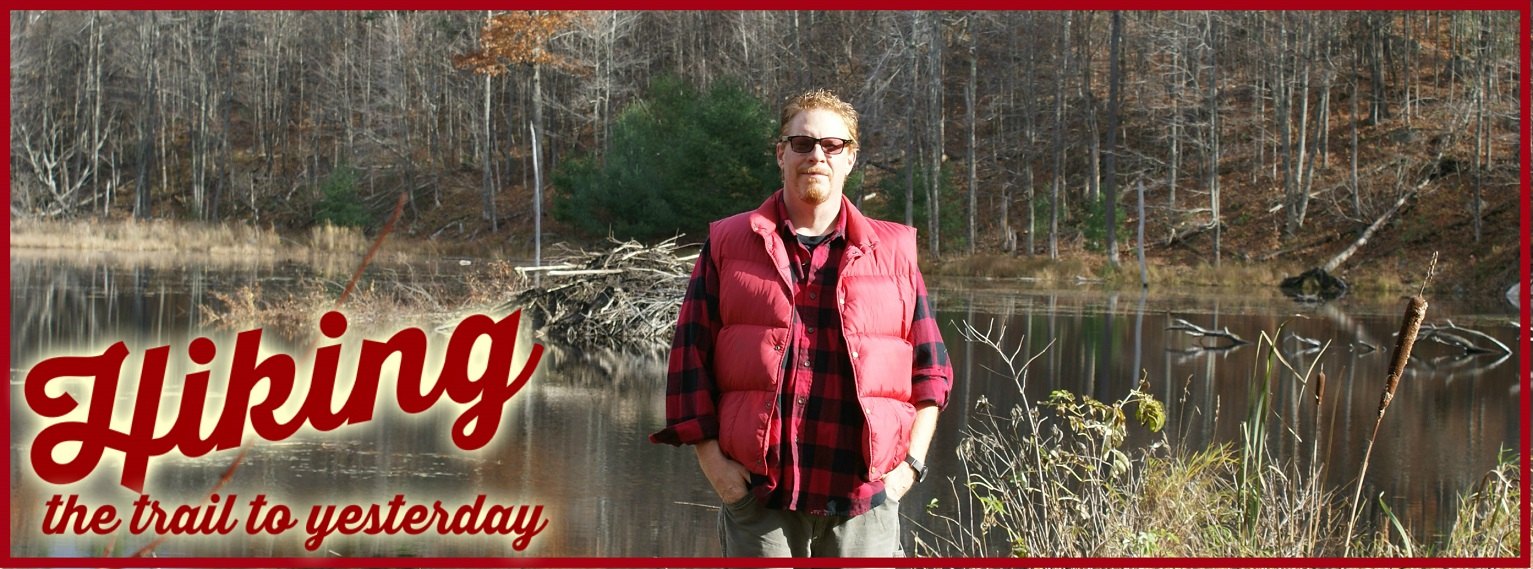
I am a life-long resident of the north country, calling Edwards my home. I have always had a passion for the outdoors, and for local history. I recently started this site to share places that have been part of our local history and heritage. I hope you get a chance to hike some of these trails for yourself, and reflect on the rich history of those that walked here before you. And if not, sit back and experience these from where ever you are right now. Either way, enjoy!

